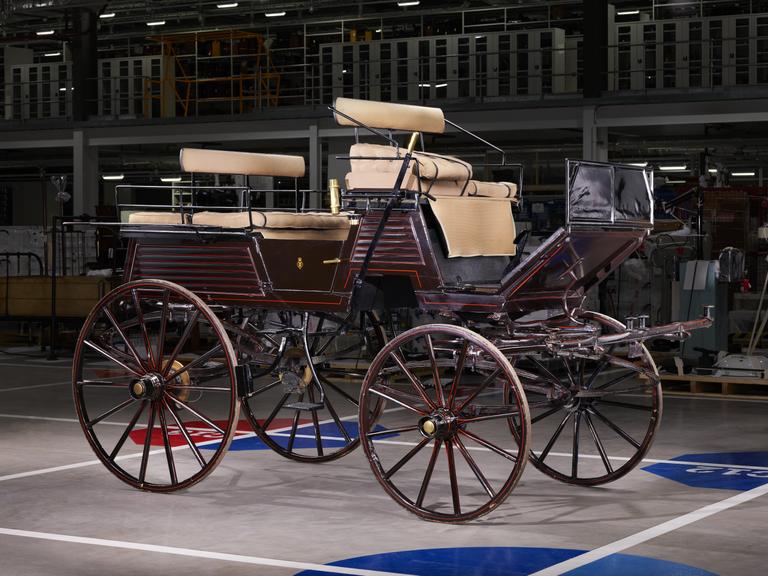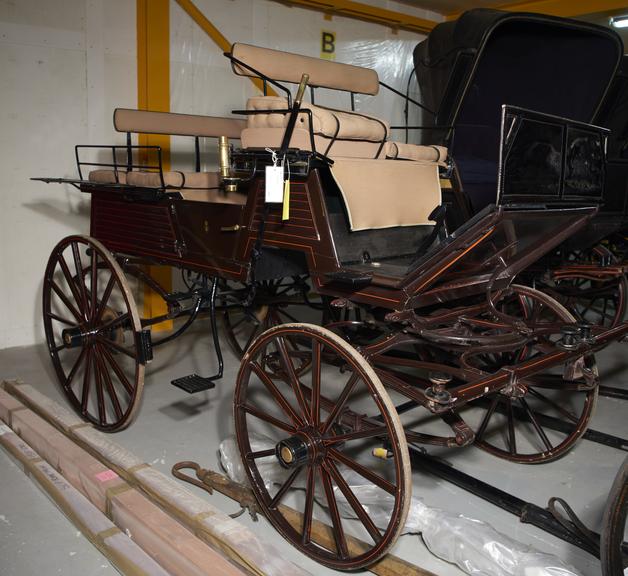Four wheeled dogcart and drawbar, built in the late 19th century by J. A. Lawton and Co. The carriage has four seats and was pulled by either one or two horses depending on the situation. Painted black with red lining. The upholstery for the cart’s front and back seats is a dark tanned corduroy. Both side doors and the back boot feature the crests of the Order of the Garter.
Key features of this cart include: its four elliptical springs for smooth driving; lockable boot for storage; a foot pedal controlling the cart’s spoon brakes; a splinter bar allowing the cart to be drawn be either a single or pair of horses. The wheels have brass hub caps which are engraved “J.A Lawton & Co, London”.
Dog carts evolved from gigs (small two-wheel, one seat carts typically pulled by single horses) during the early 19th century, with the first reference to ‘dog carts’ coming from around 1817. As the name implies, dog carts were originally designed for carrying dogs, which would have been kept in ventilated boxes located near the back sears, They quickly became popular for other uses such as transporting goods or people, though the term ‘dog cart’ stuck. Whilst two-wheeled dog carts were the more common variant, four wheeled dog carts (such as this one) became increasingly popular from the mid-19th century onwards.
This four-wheeled dog cart was built in the late 19th century by J. A. Lawton and Co, a coachbuilder and harness maker founded in 1870 in Liverpool. It was purchased by Gilbert Russell, a British military officer who served in the First World War who later became a banker. An enthusiast of carriages, Gilbert Russell carried out his own research into the history of the carriages he owned, which he shared with the Science Museum Group when he donated this dog cart (among other carriages such as 1938-493 – a late 19th century dress chariot and 1938-494 – a late 19th century town coach) in 1938.
When the cart was acquired, it was painted yellow and black. In 1997 the four-wheel dog cart was loaned (alongside several other carriages) for display at the Royal Mews. During this period the cart was chosen for restoration and refitting by Prince Philip for his personal use in international competitive carriage racing. Prince Philip has been widely credited with the expansion of international competitive carriage racing during the 1970s until his death in 2021, the rules for which he helped to draft.
The restoration involved repainting the carriage to have the royal livery, a black body with red lining, and to have various alterations including a lengthened leather dash at the front, and Order of the Garter crests placed onto the side doors and back of the carriage.
This example is one of the few carriages in the collection that has an active career in the late 20th century and is an example of one of the ways carriages continue to play a part in contemporary society and culture.









